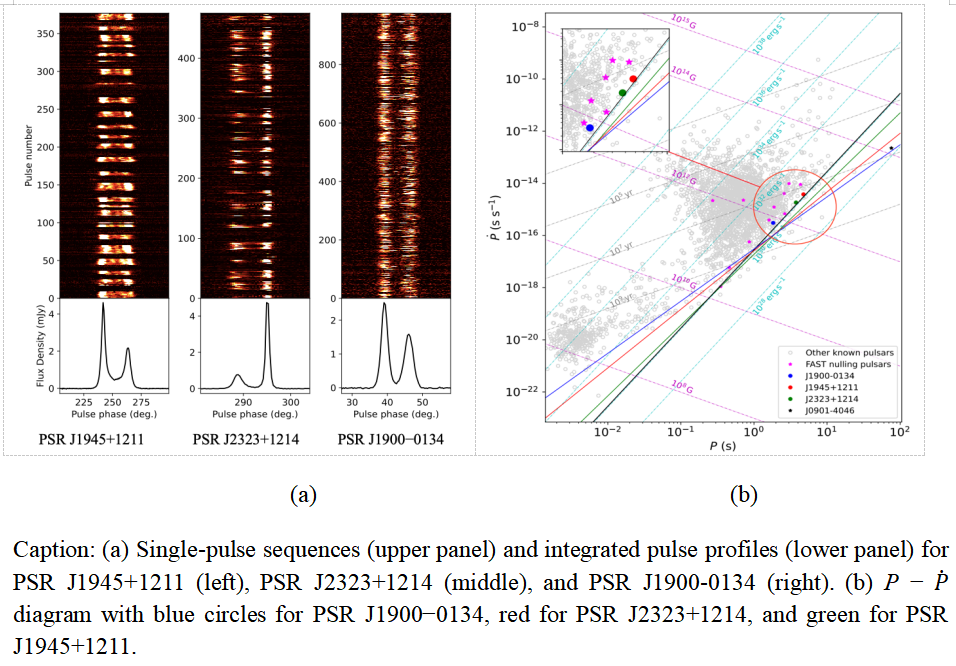Emission Behavior of Long-Period Pulsars Detected by FAST Reveals New Insights into Pulsar Evolution
The Astrophysical Journal Supplement Series (ApJS) recently published research led by the National Astronomical Observatories, Chinese Academy of Sciences (NAOC), as part of the Commensal Radio Astronomy FAST Survey (CRAFTS) project. This study presents a comprehensive analysis of three long-period pulsars observed with the Five-hundred-meter Aperture Spherical radio Telescope (FAST), as shown in Figure 1. The research reveals fascinating emission phenomena such as quasi-periodic nulls, bright pulses, dwarf pulses, and complex microstructure pulses, offering crucial insights into the magnetospheric processes driving pulsar emissions and their potential implications for magnetic reconnection models.
Pulsars are highly magnetized, rapidly rotating neutron stars, and well-known for their stable emission of radio pulses. This study sheds light on the connection between pulsar nulling behavior and the pulsar death line, where radio emissions are believed to cease due to the limitations of electron-positron pair production. Notably, the research shows that PSR J1945+1211 and PSR J2323+1214 exhibit high null fractions (52.46% and 48.48%, respectively), suggesting they are near the pulsar death line, with their low spin-down luminosities supporting this hypothesis. In contrast, PSR J1900-0134, farther from the death line, shows a lower null fraction of 28%, indicating a correlation between nulling behavior and pulsar evolution.
The study also highlights the detection of “dwarf pulses,” significantly weaker and narrower than typical burst pulses, in one of the pulsars. This discovery, along with detailed analysis of microstructure pulses as brief as 2.02 milliseconds, provides new perspectives on the emission mechanisms in long-period pulsars. Also, bright pulses in the three investigated pulsars vary in rate and intensity, with burst states showing higher peak intensities and wider widths. This work marks a significant advancement in understanding the complex nature of pulsar emission mechanisms and their magnetospheric dynamics. The findings have critical implications for the evolution of pulsars and the fundamental processes governing their radio emissions.
The research, led by the National Astronomical Observatories, CAS (NAOC), with Dr. Habtamu Menberu Tedila (postdoctoral researcher) as the first author, and Prof. Di Li of NAOC/Tsinghua University and Dr. Pei Wang of NAOC as co-corresponding authors, includes collaborations from various institutions in China. This study is part of ongoing efforts to explore pulsar variability, intermittency, and their connection to the pulsar death line. For more information, visit: https://doi.org/10.3847/1538-4365/adb280.
